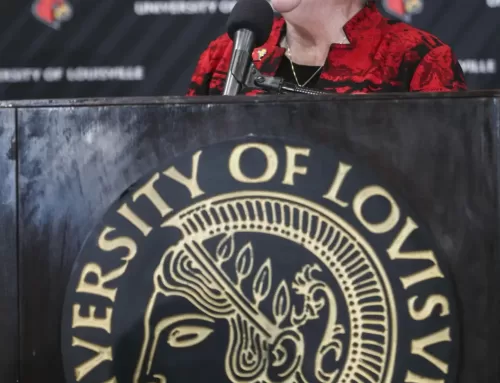By Madelin Shelton —
A group of U of L undergraduate students have created a new water pollution testing tool that tests for E.coli bacteria in water sources.
The testing tool was inspired by the students’ service project with the Metropolitan Sewer District, Bernheim Forest and The Nature Conservancy. Their work entailed monitoring, cleaning and restoring streams in Louisville.
Part of these tasks included testing the streams for E.coli bacteria, a type of bacteria found in biological waste that can cause disease. However, with the type of testing required by the Environmental Protection Agency (EPA) and the Kentucky Department for Environmental Protection, the students were having to travel to each of the 10 sites at least five times a month.
Sam Kessler was the leading student behind the project and is a current Grawemeyer Scholar.
“With our class schedules, going to each of those sites multiple times per month wasn’t going to work for very long,” Kessler said in a U of L News article.
In response, Kessler and his team invented a new type of water pollution test that works by being mounted to concrete in a stream. After a certain amount of time has passed, the test is taken out and sampled for E.coli bacteria.
“The number of colonies you count from that give a really good estimate of the total amount of E.coli pollution over time,” Kessler said.
The test is more time and cost efficient than other common methods.
The other standards of water testing measure E.coli levels present at the time the test is taken and does not account for potential fluctuating levels of E.coli on the days in between tests.
“You can leave it in the stream or river all month and test once instead of making at least five different trips,” Kessler told U of L News. “And, because it’s in the stream all month instead of the isolated tests we currently do, you get more insightful results from a cumulative sample.”
When asked what his future plans were in terms of promoting the invention and increasing access to it, Kessler said the device is patent-pending and the patent is co-owned by the United States Government, which will serve to increase access to the technology.
In addition, Kessler is working on a peer-reviewed publication for the invention and hopes that someone is able to take the technology to developing screening for COVID-19 in wastewater.
Photo Courtesy // U of L News



